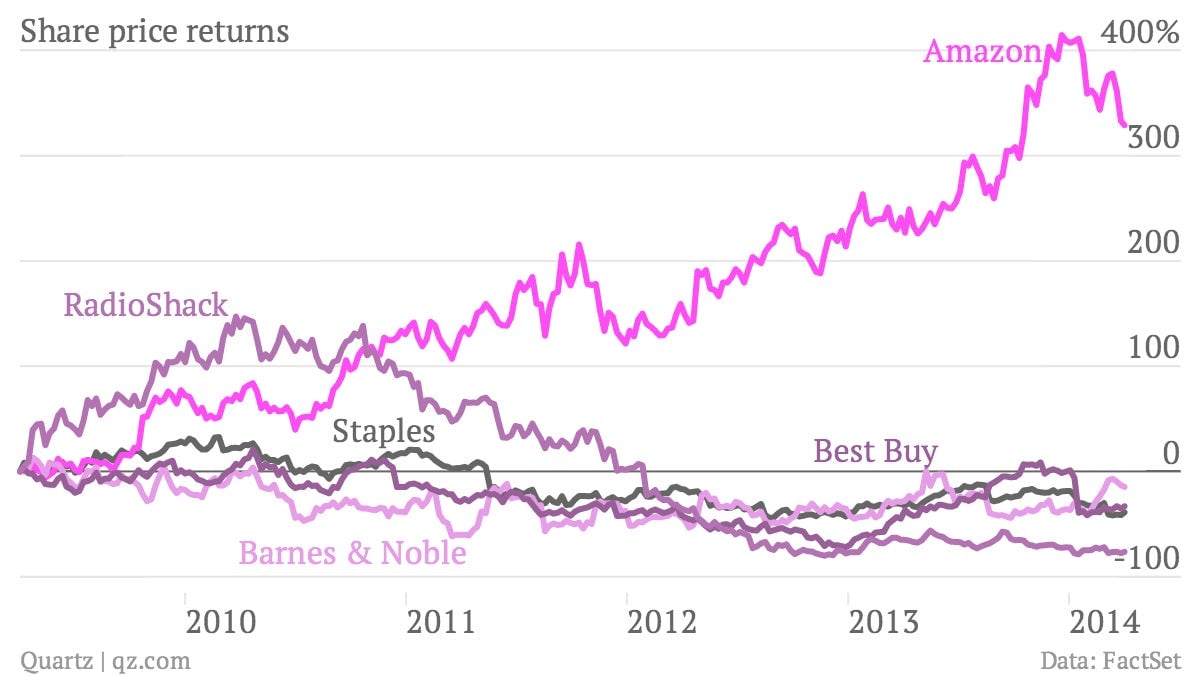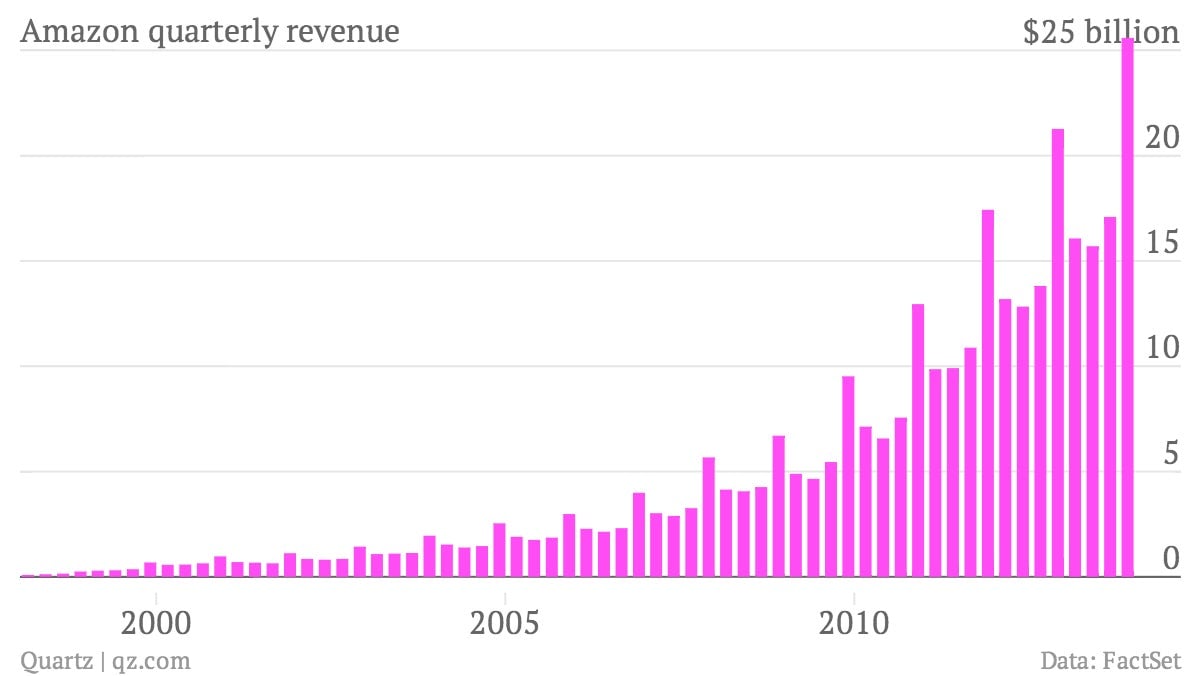TV industry take note: this is what being disrupted by Amazon looks like
Amazon yesterday thrust itself into the increasingly crowded battle for control of your living room, with the launch of its own streaming device, FireTV.

Amazon yesterday thrust itself into the increasingly crowded battle for control of your living room, with the launch of its own streaming device, FireTV.
The online retailer has an uphill battle ahead in streaming video—a sector dominated by Netflix and, to a lesser extent, Hulu, with Apple also trying to crack the code. But those populating the television ecosystem would do well to remember just how disruptive a force Amazon has been in America’s economy in recent years. Its share price has relentlessly marched higher while the established players in the industries it has taken on—first book-selling, then electronics and office supplies, among others—have all gone backwards.
That rise has been fueled by Amazon’s consistent, high-double-digit sales growth, driven by highly competitive prices that brick and mortar retailers, encumbered by higher costs and physical stores, have been unable to match.

Amazon has been able to achieve this in part due to the incredible support of its shareholders, which has allowed for a business model that places profits second to the goal of growing market share. Still, television is a vastly different industry to retail, and Amazon will now find itself in competition with equally growth-minded companies such as Netflix and Apple.
Amazon Fire’s hardware is priced at the higher end of streaming video devices, but it also includes gaming functionality (and online gaming is absolutely booming); and the Prime Instant Video service, tacked on to the retailer’s unlimited-shipping deal, is still only slightly more expensive than Netflix. (Despite a recent price hike, consumers generally seem pleased with the deal they get from Amazon.)
As booksellers, electronics stores and stationary retailers can attest, betting against Jeff Bezos and Amazon is a dangerous exercise.